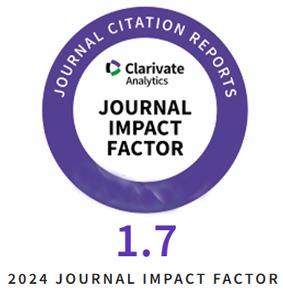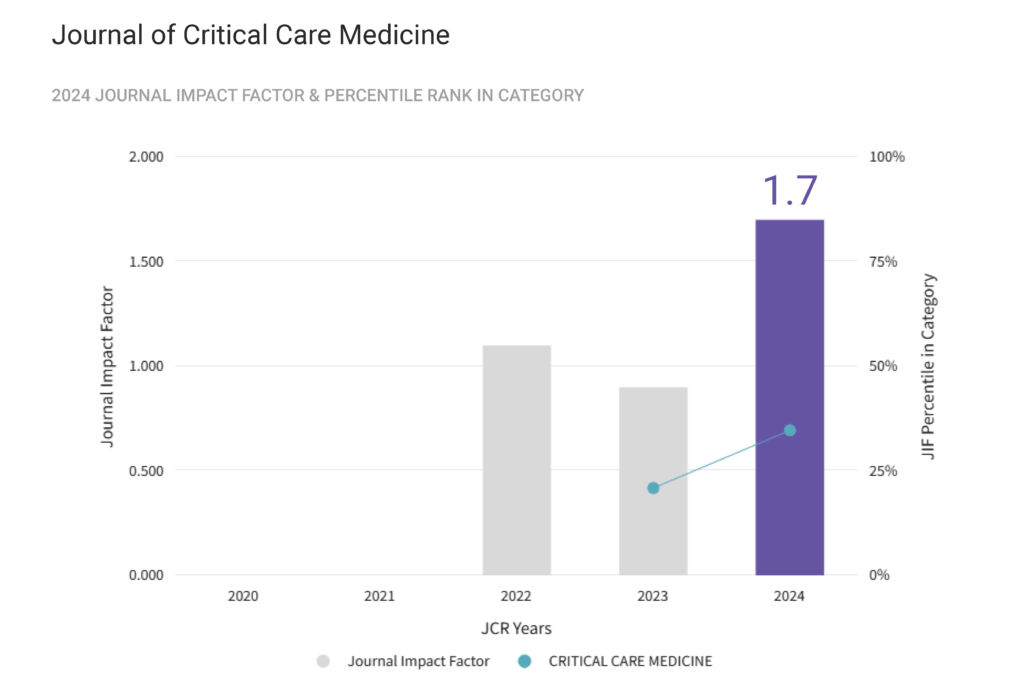Introduction: Venous thromboembolism is a rare condition in paediatrics that included both deep venous thrombosis and pulmonary embolism. Serratia marcescens is a gram-negative bacterium that belongs to the Enterobacteriaceae family and tends to affect immunocompromised hosts.
Case report: We report the case of an 11-year-old boy, admitted in the Pediatric Clinic I from Emergency County Hospital Tîrgu Mureș, Romania with intense pain, swelling, cyanosis and claudication of the left foot. His personal history revealed a recent appendectomy. A close family was reported to have had a deep venous thrombosis. The laboratory tests, performed on the day of admission, revealed increased inflammatory biomarkers and D-dimer. Coagulation tests gave a low activated partial thromboplastin time (APTT). Doppler venous ultrasound and CT-exam established a diagnosis of deep venous thrombosis. Anticoagulant therapy was initiated, but on the tenth day of admission, the patient developed signs and symptoms of sepsis, and the blood culture revealed Serratia marcescens. After antibiotic and anticoagulant therapy, the patient progressed favourably. The patient was a carrier of the heterozygous form of Factor V Leiden.
Conclusions: The association between deep venous thrombosis and Serratia marcescens sepsis can compromise a condition in pediatric patients.
Tag Archives: sepsis
Let’s Talk About Sepsis
The current definition of sepsis is based on comparatively contemporary knowledge. However, the disease process is not fully understood and treatment still profoundly challenging. Definitions and guidelines have changed over the recent years, and clinicians are always interested to know what the new and current thoughts on the subject are.
Many papers have been published in the medical press, reporting on definitions, scores, models, cytokines, therapies, new trends, statistics, campaigns, including a sepsis anniversary day-which is not celebrating but fighting against sepsis. Together they signify the enormous interest in the subject.
The American College of Chest Physicians and the Society of Critical Care Medicine met in 1992 and gave the first definition of sepsis and associated organ failure [1]. Eleven years later, American intensivists met European intensivists to evaluate if there was a need for a new definition of sepsis [2]. [More]
Clinical Features and Outcomes of Fusobacterium Species Infections in a Ten-Year Follow-up
Objective. Although uncommon, Fusobacterium infections have a wide clinical spectrum, ranging from local pharyngeal infections to septic shock. Our aim was to characterize and analyze the clinical features and outcomes in patients with Fusobacterium infections, and determine which variables were able to predict a poor outcome.
Methods. We conducted a retrospective, hospital-based study using the computerized records of a second-level Spanish general hospital, serving a population of 155,000 inhabitants. The cohort was enrolled among patients cared for at the hospital between 2007 and 2016. Demographic, clinical data, microbiological characterization and outcomes at discharge, were analyzed.
Results. We collected data for all 26 patients over a 10-year period (annual incidence of 1.78 per 100,000), with an incidence of bacteremia of 0.53 cases per 100,000 population per year. F. nucleatum and F. necrophorum were the most frequent isolations (53.8% and 38.5%, respectively). F. necrophorum was found to be associated with a younger population. Although we found no deaths attributable to Fusobacterium, 15 patients (57%) were found to have severe infections due to this pathogen, and 7 patients (26.9%) were admitted to the Intensive Care Unit (ICU). The only identifiable risk factor for a severe infection (sepsis, septic shock or ICU admission) was the presence of bacteremia.
Conclusions. Fusobacterium infections are uncommon. F. necrophorum tends to cause infection in younger individuals, while F. nucleatum has a preference for older patients. The clinical spectrum is wide, ranging from local, non-severe infections, such as sinusitis or pharyngitis, to abscess formation and life-threatening infections.
Lung Abscess Remains a Life-Threatening Condition in Pediatrics – A Case Report
Pulmonary abscess or lung abscess is a lung infection which destroys the lung parenchyma leading to cavitations and central necrosis in localised areas formed by thick-walled purulent material. It can be primary or secondary. Lung abscesses can occur at any age, but it seems that paediatric pulmonary abscess morbidity is lower than in adults. We present the case of a one year and 5-month-old male child admitted to our clinic for fever, loss of appetite and an overall altered general status. Laboratory tests revealed elevated inflammatory biomarkers, leukocytosis with neutrophilia, anaemia, thrombocytosis, low serum iron concentration and increased lactate dehydrogenase level. Despite wide-spectrum antibiotic therapy, the patient’s progress remained poor after seven days of treatment and a CT scan established the diagnosis of a large lung abscess. Despite changing the antibiotic therapy, surgical intervention was eventually needed. There was a slow but steady improvement and eventually, the patient was discharged after approximately five weeks.
The Importance of Haemogram Parameters in the Diagnosis and Prognosis of Septic Patients
Sepsis represents a severe pathology that requires both rapid and precise positive and differential diagnosis to identify patients who need immediate antimicrobial therapy. Monitoring septic patients’ outcome leads to prolonged hospitalisation and antibacterial therapy, often accompanied by substantial side effects, complications and a high mortality risk.
Septic patients present with complex pathophysiological and immunological disorders and with a predominance of pro-inflammatory or anti-inflammatory mediators which are heterogeneous with respect to the infectious focus, the aetiology of sepsis or patients’ immune status or comorbidities. Previous studies performed have analysed inflammatory biomarkers, but a test or combinations of tests that can quickly and precisely establish a diagnosis or prognosis of septic patients has yet to be discovered. Recent research has focused on re-analysing older accessible parameters found in the complete blood count to determine the sensitivity, specificity, positive and negative predictive values for the diagnosis and prognosis of sepsis.
The neutrophil/lymphocyte count ratio (NLCR), mean platelet volume (MPV) and red blood cells distribution width (RDW) are haemogram indicators which have been evaluated and which are of proven use in septic patients’ management.
Anticoagulant Therapy in Sepsis. The Importance of Timing
Sepsis associated coagulopathy is due to the inflammation-induced activation of coagulation pathways concomitant with dysfunction of anticoagulant and fibrinolytic systems, leading to different degrees of haemostasis dysregulation. This response is initially beneficial, contributing to antimicrobial defence, but when control is lost coagulation activation leads to widespread microvascular thrombosis and subsequent organ failure. Large clinical trials of sepsis-related anticoagulant therapies failed to show survival benefits, but posthoc analysis of databases and several smaller studies showed beneficial effects of anticoagulants in subgroups of patients with early sepsis-induced disseminated intravascular coagulation. A reasonable explanation could be the difference in timing of anticoagulant therapy and patient heterogeneity associated with large trials. Proper selection of patients and adequate timing are required for treatment to be successful. The time when coagulation activation changes from advantageous to detrimental represents the right moment for the administration of coagulation-targeted therapy. In this way, the defence function of the haemostatic system is preserved, and the harmful effects of overwhelming coagulation activation are avoided.
The Relevance of Coding Gene Polymorphysms of Cytokines and Cellular Receptors in Sepsis
Sepsis is an injurious systemic host response to infection, which can often lead to septic shock and death. Recently, the immune-pathogenesis and genomics of sepsis have become a research topic focusing on the establishment of diagnostic and prognostic biomarkers. As yet, none have been identified as having the necessary specificity to be used independently of other factors in this respect. However the accumulation of current evidence regarding genetic variations, especially the single nucleotide polymorphisms (SNPs) of cytokines and other innate immunity determinants, partially explains the susceptibility and individual differences of patients with regard to the evolution of sepsis. This article outlines the role of genetic variation of some serum proteins which have the potential to be used as biomarker values in evaluating sepsis susceptibility and the progression of the condition.
A Fatal Case of Community Acquired Cupriavidus Pauculus Pneumonia
Introduction: Cupriavidus pauculus is a rarely isolated non-fermentative, aerobic bacillus, which occasionally causes severe human infections, especially in immunocompromised patients. Strains have been isolated from various clinical and environmental sources.
Case presentation: A 67-year-old man was admitted to the Intensive Care Unit with acute respiratory failure. The patient was diagnosed with bilateral pneumonia, pulmonary sepsis and underwent invasive mechanical ventilation. Examination revealed diminished bilateral vesicular breath sounds, fever, intense yellow tracheal secretions, a respiratory rate of 24/minute, a heart rate of 123/minute, and blood pressure of 75/55 mmHg. Vasoactive treatment was initiated. Investigations revealed elevated lactate and C-reactive protein levels. A chest X-ray showed bilateral infiltration. Parenteral ciprofloxacin and ceftriaxone were administered. Tracheal aspirate culture and blood culture showed bacterial growth of Cupriavidus pauculus. Colistin was added to the treatment. There was a poor clinical response despite repeated blood culture showing negative results. The diagnosis of multiple organ dysfunction syndrome (MODS) caused by C. pauculus was made. The patient died eleven days after admission.
Conclusions: Clinical improvement cannot always be expected in spite of targeted antibiotic therapy. This pathogen should be considered responsible for infections that usually develop in immunocompromised patients.
Sepsis-Associated Coagulopathy
Systemic inflammatory activation in sepsis often leads to coagulation activation, but the relationship is bilateral, as coagulation also modulates the inflammatory response. This close associate has significant consequences for the pathogenesis of microvascular thrombosis and organ dysfunction in sepsis. While coagulation activation can be beneficial for immune defense, it can also be detrimental once it becomes widespread and uncontrolled. The knowledge of the pathophysiologic mechanisms involved in the interaction between infection and coagulation may lead to the better timing for the administration of targeted antithrombotic therapies in septic patients. This brief review highlights the pathophysiologic pathways leading to the prothrombotic state in sepsis and the mechanisms that play a role in the interaction between infection and coagulation.
Can APACHE II, SOFA, ISS, and RTS Severity Scores be Used to Predict Septic Complications in Multiple Trauma Patients?
Background: Physiological composite scores are used to predict mortality in multiple trauma patients. Sepsis is the leading cause of late mortality in trauma victims brought about by immune suppression due to homeostasis dysregulation.
Objective: To determine whether APACHE II, SOFA, ISS and RTS scores can predict the occurrence of sepsis in multiple trauma patients.
Methods: APACHE II, SOFA, ISS, and RTS scores were calculated during the first twenty-four hours after the injury for sixty-four adult poly-traumatic patients. The occurrence of infectious complications was investigated over a fourteen-day period. The infection-free rates for the multiple trauma patients were considered as end-points in the Kaplan-Meier plot analysis.
Results: For SOFA, a cutoff score of 4 points was identified as a predictor of the occurrence of sepsis, with 89% of the patients with SOFA<4 being infection-free, while 37% of those with SOFA>4 were infection-free (p<0.01). None of the patients with APACHE II≤5 points developed infections. Eighty-four percent of patients with APACHE II scores of 5-10 did not develop sepsis, while 49% with APACHE II≥11 were infection-free (p<0.01). A cutoff of 7 points was found to be most discriminative for RTS. Eighty-eight percent of the patients with RTS≥7 and 43% of those with RTS<7 were infection-free (p<0.01). Eighty-eight percent of patients with ISS<22 did not develop sepsis and 56% with ISS≥22 did not develop sepsis (p<0.01).
Conclusion: APACHE II, SOFA, ISS, and RTS functional severity scores can predict mortality as well as the occurrence of sepsis in multiple trauma patients.










